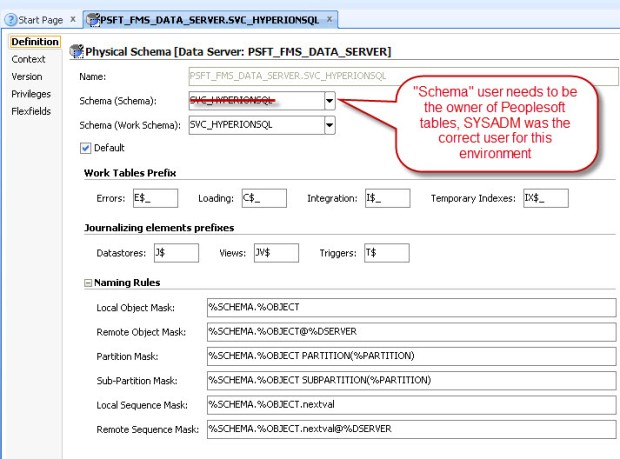I recently wrapped up an infrastructure project at a client that needed to prove the connection between Peoplesoft and FDMEE would work. The client will then use this connection going forward as he builds out his brand new implementation.
We kept getting stuck with the FDMEE connection “initialize” step. The DBA granted us read-only access to the Peoplesoft tables through a separate schema than the owner of the tables. For security reasons, they didn’t want us logging directly into the Oracle database as the owner of the Peoplesoft tables and for that I cannot blame them. I setup the connection in ODI as I have a few times before and expected that everything would be just fine. Unfortunately, we kept getting an Oracle error in ODI: ORA-00942: table or view does not exist.
I connected to the schema using SQL Developer and when I tried to view the tables, I could see that no tables existed under my service account schema. I was able to query the Peoplesoft tables through synonyms, though, so we assumed that everything would work fine.
As we looked at the errors in the ODI logs, we could see that it was attempting to access the tables using a “Schema.Table” naming convention. The schema that it was using was our service account schema “SVC_HYPERIONSQL”. Since that schema didn’t contain any tables, it was clear that was the cause behind the errors, but how to get the integration to point to the correct schema where the tables exist?
I went back into ODI and looked at the Data Server connection. That’s when I realized that the “Schema” that it was asking for needed to be the owner of the Peoplesoft tables. We could use our other service account schema as the Work Schema, but in order for the integrations to run properly, they needed to access the tables using the correct account, which was SYSADM for this environment.
After selecting the proper schema, the “Initialize” step in FDMEE worked without a hitch.
